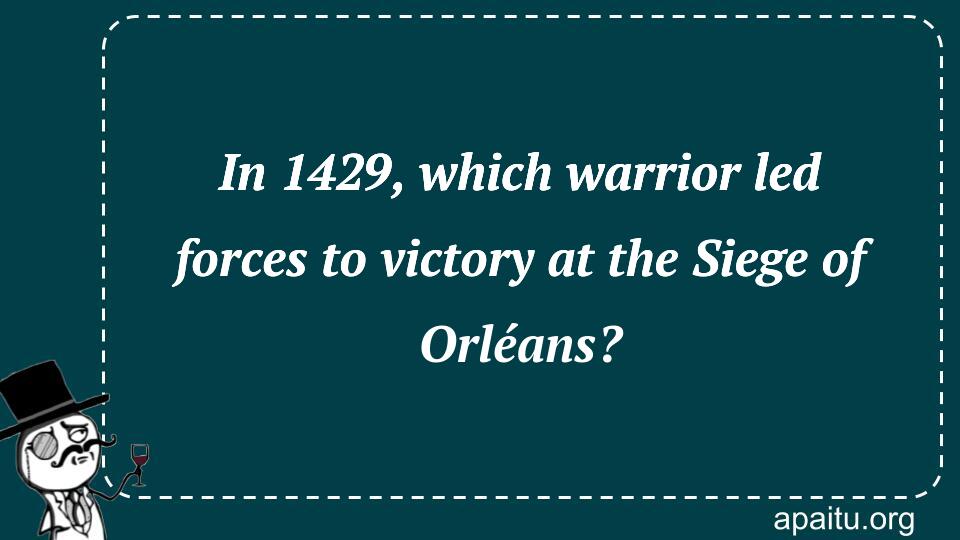Question
Here is the question : IN 1429, WHICH WARRIOR LED FORCES TO VICTORY AT THE SIEGE OF ORLéANS?
Option
Here is the option for the question :
- Marquis de Lafayette
- Joan of Arc
- Eleanor of Aquitaine
- Charles de Gaulle
The Answer:
And, the answer for the the question is :
Explanation:
Joan of Arc was a devout young woman who believed God had chosen her to lead France to victory over England during the Hundred Years’ War. She shaved her head, disguised as a man, and persuaded Prince Charles of Valois to let her lead the French army to the beleaguered city of Orléans. In 1429, she rallied French troops at Orléans and declared victory. Joan of Arc was regarded as a national hero before being captured by the English and burnt at the stake for witchcraft and heresy.

Joan of Arc, also known as the Maid of Orléans, is one of the most famous and iconic figures of French history. She was born in 1412 in the village of Domrémy in northeastern France and grew up during the tumultuous period of the Hundred Years’ War between France and England.
In 1429, when Joan was just 17 years old, she appeared before the dauphin (the heir to the French throne) and claimed that she had been sent by God to help the French in their struggle against the English. At the time, the French army was on the brink of defeat and the English had laid siege to the city of Orléans, a strategic stronghold on the Loire River.
Joan was eventually allowed to lead a force to lift the siege of Orléans. She arrived at the city in April 1429, dressed in armor and carrying a banner with the image of Jesus and the words “Jhesus Maria.” Her presence and her faith inspired the French troops, who rallied around her and fought with renewed vigor.
Under Joan’s leadership, the French were able to break the English siege and force them to retreat. The victory at Orléans was a turning point in the Hundred Years’ War and marked the beginning of a series of French victories that would eventually drive the English out of France.
Joan went on to lead several more successful military campaigns before she was captured by the English in 1430. She was put on trial for heresy and witchcraft and was ultimately convicted and burned at the stake in 1431.
Joan’s legacy has endured. She is remembered as a courageous and inspirational figure who defied gender norms and social conventions to lead a successful military campaign. She has been the subject of numerous works of art, literature, and film, and her story continues to captivate and inspire people around the world to this day.
In 1920, Joan was canonized as a saint by the Catholic Church, and she is now recognized as one of the patron saints of France. Her bravery and faith have made her an enduring symbol of French nationalism and a source of inspiration for people of all backgrounds and beliefs.